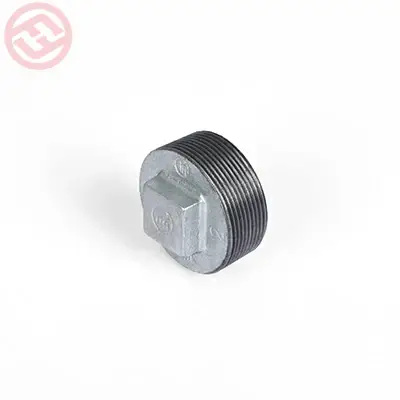Cast iron pipe fittings are typically installed and connected to the plumbing system using the following steps:
Preparation: Ensure that the pipe ends and fittings are clean and free from any debris, rust, or scale. Use a wire brush or sandpaper to clean the surfaces if necessary.
Measurement and Planning: Measure and mark the pipe and fitting to determine the desired length and alignment. Consider factors such as proper slope for drainage and any necessary angles or offsets in the plumbing system.
Lubrication: Apply a suitable lubricant, such as pipe joint compound or plumber’s grease, to the mating surfaces of the pipe and fittings. This helps create a tight seal and facilitates the assembly process.
Assembly: Insert the pipe into the fitting, making sure it goes all the way in until it reaches the stop or shoulder inside the fitting. Rotate the pipe slightly if needed to ensure a proper fit. For larger fittings, a mallet or rubber mallet may be used to gently tap the pipe into place.
Alignment: Check the alignment of the assembled pipes and fittings to ensure they are straight and properly aligned. Make any necessary adjustments before proceeding.
Jointing Method: There are several methods commonly used for jointing cast iron pipe fittings:
Mechanical Joint: This method involves using a rubber gasket and mechanical joint clamp to secure the pipe and fitting together. The clamp is tightened to create a watertight seal.
Compression Gasket Joint: This method utilizes a compression gasket that is compressed between the pipe and fitting using a compression gland. The gland is tightened to create a secure connection.
Lead and Oakum Joint: In traditional plumbing systems, molten lead and oakum (hemp fiber) were used to create a seal between the pipe and fitting. This method is less common today due to environmental and health concerns.
Securing the Joint: Depending on the jointing method used, follow the manufacturer’s instructions to secure the joint properly. This may involve tightening bolts, nuts, or clamps or pouring molten lead in the case of a lead and oakum joint.
Inspections: After the joint is secured, visually inspect the connection to ensure it is properly sealed and aligned. Check for any leaks or gaps that may require adjustment or additional sealing.
It’s important to note that the specific installation process may vary depending on the type of cast iron pipe and fittings being used, Cast iron pipe fittings as well as any local building codes or regulations. It is recommended to consult the manufacturer’s instructions and adhere to applicable plumbing standards and guidelines when installing cast iron pipe fittings.
How do cast iron pipe fittings handle high temperatures, such as in hot water or steam applications?
Cast iron pipe fittings are known for their ability to handle high temperatures, making them suitable for hot water and steam applications.
Here’s how cast iron pipe fittings handle high temperatures:
Heat Resistance: Cast iron is a material with excellent heat resistance. It can withstand high temperatures without significant deformation or structural damage. This makes cast iron pipe fittings suitable for conveying hot water, steam, and other fluids at elevated temperatures.
Thermal Expansion: Cast iron has a relatively low coefficient of thermal expansion. This means that it expands and contracts less than other materials when exposed to temperature changes. This property helps maintain the integrity and stability of the pipe fittings even under thermal stress.
Retention of Shape: Cast iron retains its shape and structural integrity even at high temperatures. This is important in hot water and steam applications where the pipe fittings may be subjected to constant heating and cooling cycles.
Resistance to Thermal Cycling: Cast iron pipe fittings can withstand repeated thermal cycling, which occurs when the temperature fluctuates between hot and cold. The material’s ability to resist cracking or warping during these cycles ensures the long-term durability and reliability of the fittings.
Insulating Properties: Cast iron has inherent insulating properties, which help to minimize heat transfer from the hot fluid inside the pipe to the surrounding environment. This can help maintain the temperature of the fluid being transported and prevent heat loss.
Corrosion Resistance: Cast iron pipe fittings are typically coated with protective materials, such as bituminous paint or epoxy, which enhance their corrosion resistance. This coating helps to protect the fittings from the corrosive effects of hot water or steam, prolonging their lifespan in high-temperature applications.
Compatible Gasket Materials: When using cast iron pipe fittings in hot water or steam applications, it’s important to select gasket materials that are suitable for high temperatures. Various gasket materials, such as high-temperature rubber or graphite, are available that can withstand the heat and maintain a proper seal.
It’s worth noting that while cast iron is well-suited for hot water and steam applications, it may not be the preferred choice for extremely high-temperature environments or applications that require superior resistance to thermal stress. In such cases, alternative materials like stainless steel or specialized alloys may be more appropriate.
As always, it’s important to consult industry standards, manufacturer guidelines, and local building codes to ensure the proper selection and installation of cast iron pipe fittings for specific high-temperature applications.
